You hear whispers about a tiny forest village in Maine, then realize people dodge the simple question of how to get there.
Curiosity spikes, because the silence feels intentional, like a secret kept for good reasons.
This is Monhegan Island Maine, where solitude is culture, and distance is part of the welcome.
Keep reading, because the story behind the hush is what makes the journey worth your time.
Monhegan Island, An Island of Isolation
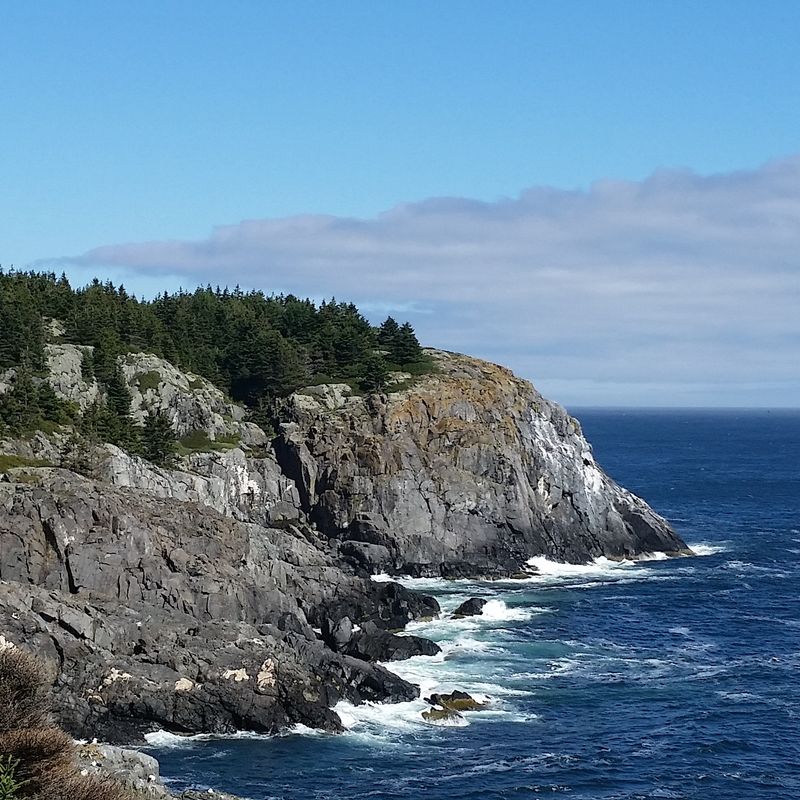
There are places in Maine that choose quiet over convenience, and Monhegan Island makes that choice every day.
It sits in the Atlantic, removed enough from the mainland that every visit requires intention, timing, and patience.
The designation as a plantation signals a self-governed identity, small in scale yet strong in character.
That distance is not an obstacle, it is the filter that shapes who arrives and how they behave.
You feel it the moment the mainland fades, when cell service slips and the seabreeze sharpens your senses.
Conversations soften, schedules loosen, and footsteps replace motors as the soundtrack of the day.
The forested core meets weathered homes near the harbor, and the edges of the island fall away into dramatic rock.
Every path seems to end in surf and wind, with gulls tracing the cliffline like careful scribes.
Nothing here begs for attention, yet everything rewards a slower look and a quieter pace.
Monhegan feels like a keepable secret, and that is exactly the point.
Location details place it off the coast of Maine, a world apart yet still part of the state’s saltwater story.
The Population, A Tiny Exclusive Community
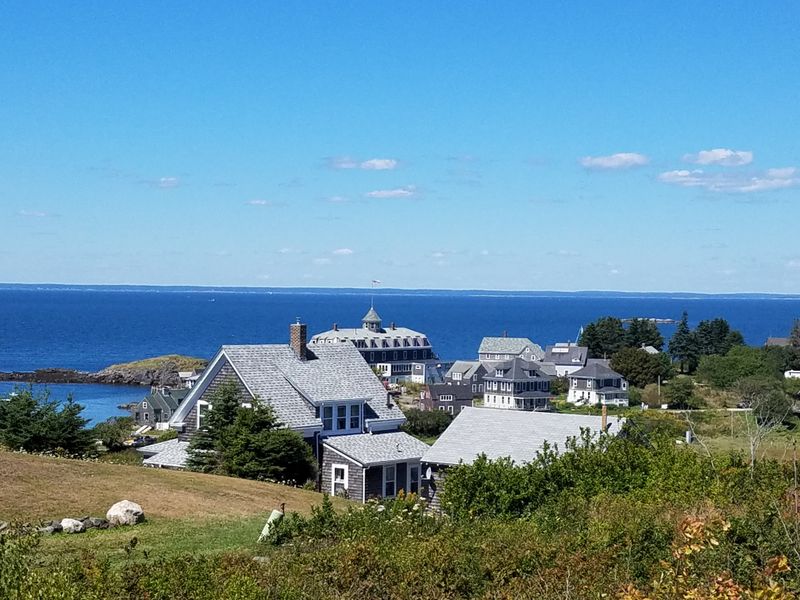
The year round community stays small, and that smallness shapes everything you notice on arrival.
People look out for one another, and daily life runs on trust, memory, and simple routines.
Traditions live in gatherings, work on the water, and shared care for trails and buildings.
Outsiders are welcomed when they tread lightly, ask more than they declare, and respect the pace of the place.
That careful welcome is not about secrecy, it is about preserving quiet in a world that rarely grants it.
When you walk the lanes, you sense names known for decades and responsibilities passed down.
Mail days matter, weather calls the shots, and the ferry’s horn still sets the clock.
The result is a community that feels cohesive without being closed, steady without being stiff.
Visitors who listen earn insights that maps and blogs cannot supply.
You will leave with fewer photos than feelings, and that is the best measure of time well spent.
It sits in Lincoln County, Maine, where the scale stays personal and the welcome depends on your respect.
The Literal Barrier, Ferry Only Access
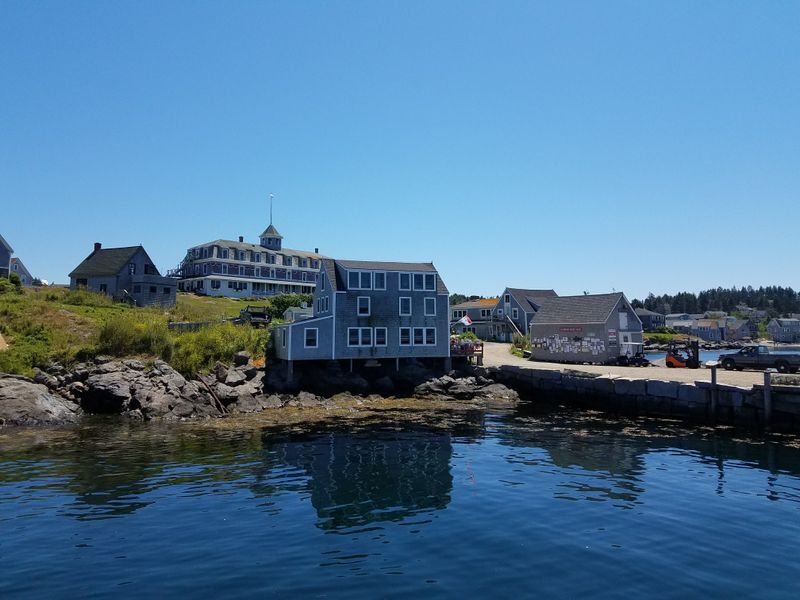
Getting to Monhegan requires a boat, and that single fact curates the experience from the first ticket search.
No bridges cross these waters, and private landings respect rules that keep the harbor orderly and safe.
Schedules change with seasons and seas, so timely planning is not optional.
Miss the last departure and you discover how distance turns into an overnight lesson in patience.
That friction protects the island from drop in crowds and casual noise.
The dock receives freight, luggage, and projects, then the village takes over on foot and cart.
The ride becomes a transition ritual, a buffer that clears urban static from your head.
Arrivals feel earned, which makes each step onto the wharf more vivid.
The return trip carries a different weight, a quiet that sticks long after the wake settles.
Travel days on the coast of Maine remind you to watch tides, not clocks.
The Absence of Cars, A Quiet Sanctuary

Silence is immediate on Monhegan, because streets are shaped for feet, not engines.
Carts and dollies move freight from the dock, and one working truck handles heavier loads with care.
Everything else runs on stride, timing, and neighborly help.
Walking draws your focus to porches, stacked lobster traps, and wind trimmed spruces.
Voices carry in a soft way, and the rustle of forest takes the place of traffic.
Without cars, the village feels scaled to people rather than machines.
Paths thread between shingled homes and gardens where laundry lifts in salt air.
Even simple errands turn into small tours of light and texture.
By day, hikers drift toward cliffs, and by evening, benches fill with quiet conversation.
The absence of noise is not empty, it is full of detail you usually miss.
This sanctuary sits off the coast of Maine, where walking is not a trend, it is daily life.
The Art Colony, Drawn by Solitude
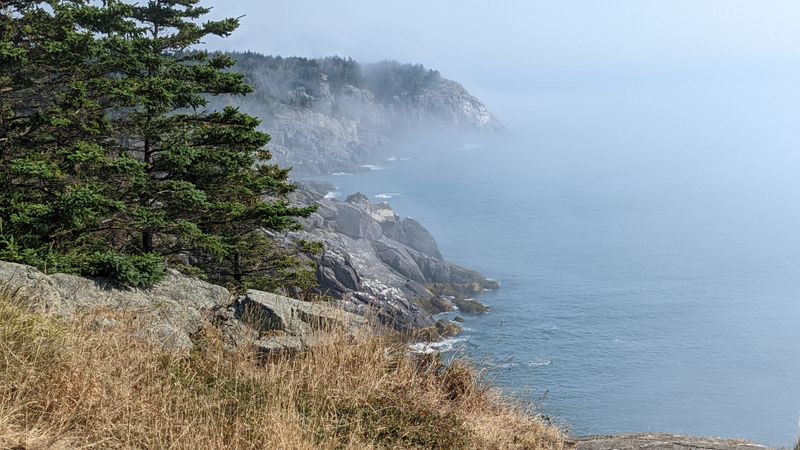
Artists have come to Monhegan for generations, chasing cliffs, fog, and a palette that changes by the hour.
The island’s edges deliver drama, while the village offers gentle geometry and weathered shingles.
Studios and cottages hold stories of sketches made in wind and rain.
You find paintings that carry sea spray in their color and pine resin in their shadows.
Solitude is the mentor here, patient and unblinking.
It teaches a slower read of light as gulls loop over Black Head and Whitehead.
Visitors can learn in silence, tracing the same footpaths that inspired earlier work.
The museum brings context without noise, setting canvases within the island’s daily life.
What grows is not just art, it is a habit of attention.
That habit follows you home like the scent of salt on a sleeve.
It anchors the creative story of Maine while honoring the island’s steady rhythm.
Forest Village Trails, Wild and Rugged Paths
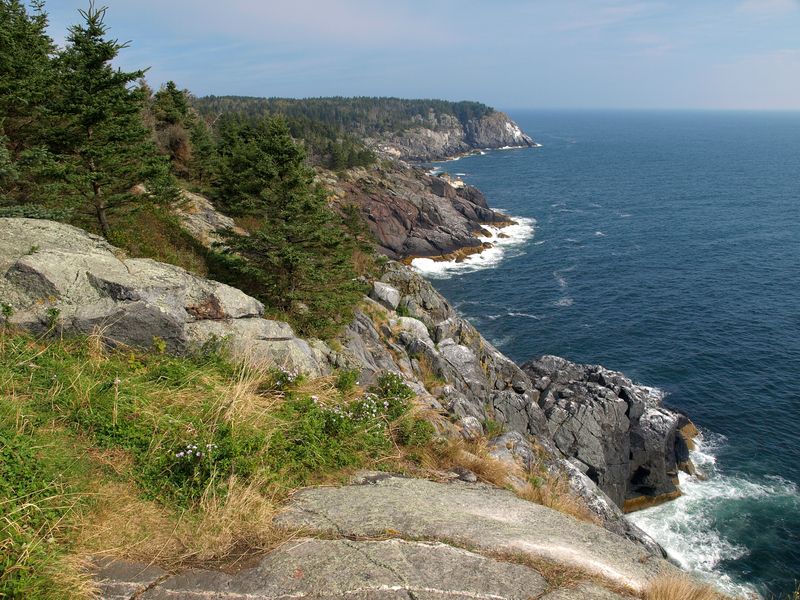
Despite the ocean view, Monhegan reads like a forest village when you step beneath the spruces.
Trails cross the island in a tight weave, linking village lanes to high cliffs and hidden coves.
Roots and rock make every mile feel alive underfoot.
Wayfinding is simple, yet the woods feel deep, quiet, and right beside the sea.
Moss softens granite, and mushrooms appear after wet days.
Wind comes as a hush until the trees part and the Atlantic roars back in.
Hikers move carefully, packing out what they carry and leaving only gentle prints.
Etiquette matters, because ecosystems here are small and responsive.
Patience reveals warblers, fox tracks, and the steady work of tides.
Each loop returns you to the village with a calmer stride.
Trail maps are available on the island in Maine, and current conditions should be checked locally.
Monhegan Lighthouse, The Island’s Sentinel
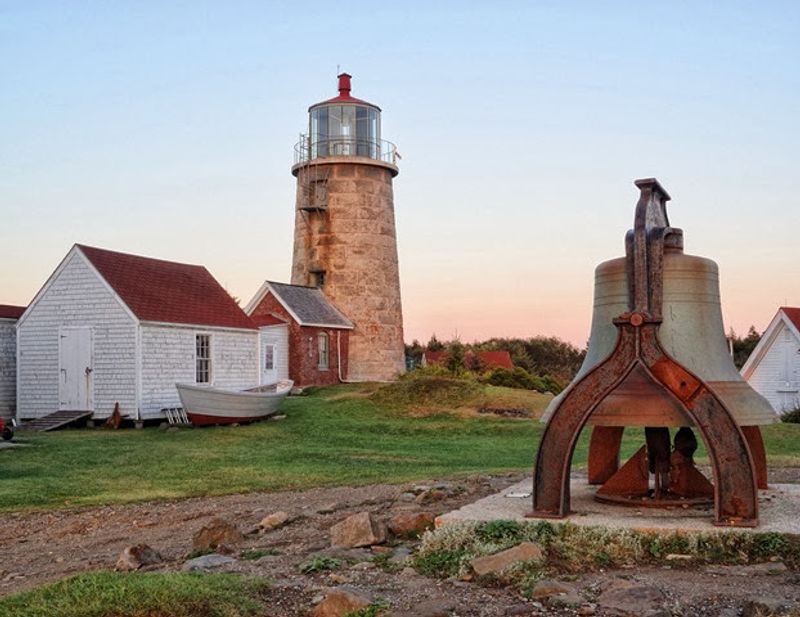
The lighthouse crowns the island on its highest ground, a steady mark against shifting weather.
Its stone presence reminds you that navigation begins with patience and a clear view.
Climbing the hill feels like walking into the island’s memory.
From the top, roofs scatter toward the harbor, and the forest rolls out behind them.
You can trace trails from the light, reading the island like a map.
On clear days, the horizon stacks in bands of blue and gray.
The keeper’s grounds hold a quiet that fits the building’s purpose.
It watches without comment, letting visitors decide how long to linger.
The museum next door adds depth to what you see outside.
Together they tell a story of signal, safety, and community endurance.
This sentinel belongs to Maine’s working coast, and it still feels essential.
Protecting Peace, Why Directions Stay Vague

The hush around logistics is not gatekeeping, it is stewardship.
Locals know that clarity invites crowds, and crowds can overwhelm small places.
Here, fewer instructions lead to better intentions.
Visitors who do the homework usually bring respect and patience.
That respect keeps trails healthy and shorelines clean.
It also preserves the silence that defines long winter months.
Asking gently goes further than insisting, and showing care earns help.
Travelers can plan with official sources and arrive ready to listen.
Island life works best when the village sets the tempo.
Your role is to adjust and enjoy what unfolds.
This approach protects a rare kind of calm in Maine, and it keeps the forest village intact.
Seasons That Shape Life, Rhythm Over Rush
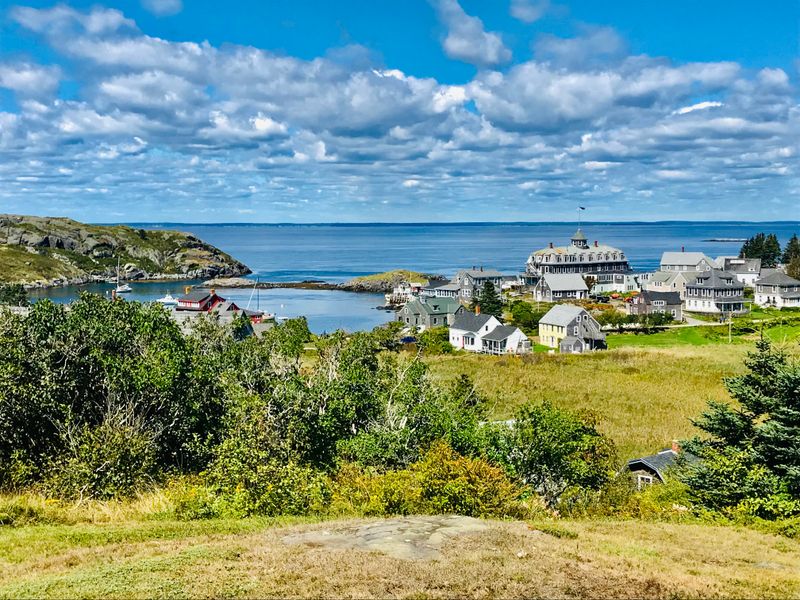
Monhegan breathes with the calendar, and that breath sets a human scale for everything.
Summer brings softer mornings and more footsteps on the lanes.
Autumn cools the edges and opens the trails to long, unhurried walks.
Winter narrows schedules and amplifies the quiet that defines the island’s core.
Spring returns light to windows and paths to regular use.
Each shift asks visitors to meet the place on its terms.
Those terms include planning your crossing and respecting limited services.
Resourcefulness becomes part of the visit, not an inconvenience.
You learn how much can be done with less noise and more patience.
That lesson sticks, long after your shoes dry on the mainland.
This seasonal rhythm belongs to coastal Maine, and it keeps the village steady through change.
Finding the Island’s True Charm, Terms You Accept
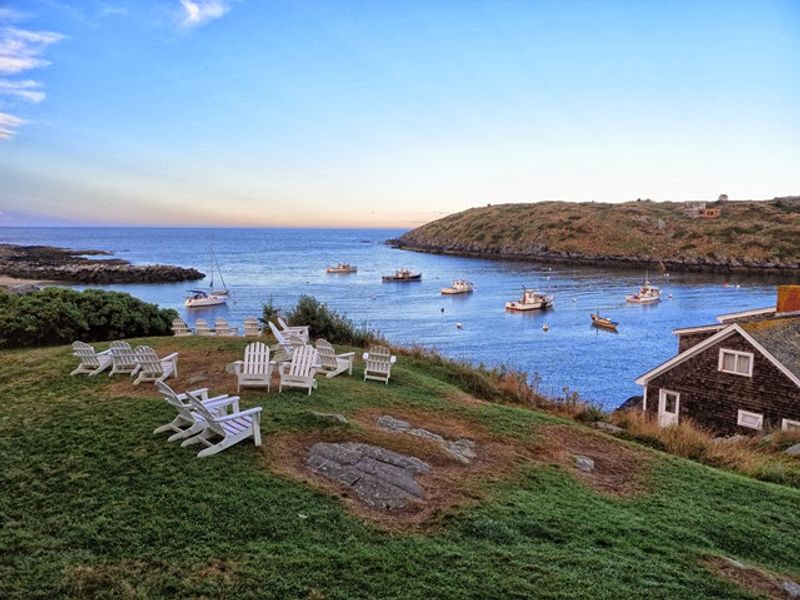
The charm here does not shout, it favors people who notice small things.
Planning becomes part of the pleasure, because each detail brings you closer to the island’s pace.
Respect looks like quiet paths, gentle voices, and a light touch.
Observation teaches more than any guidebook you could pack.
You discover a place that keeps complexity offstage and lets nature speak first.
Work and weather still steer the day, and that honesty feels rare.
Leave space in your schedule so the island can fill it.
Walk slow, carry out what you carry in, and thank those who point the way.
Monhegan rewards that approach with moments that feel private even in plain sight.
Those moments become the real directions you take home.
It rests off Maine’s coast, and its quiet rules are the reason you will want to return.
Practicalities That Keep It Simple, What To Know Before You Go

Simplicity guides every good visit, and a few basics make all the difference.
Book ferry tickets ahead, confirm schedules close to departure, and travel light enough to carry your bags.
Expect limited services and aim to be self sufficient with layers, water, and a flexible plan.
Pack out all trash, stay on marked paths, and give working areas respectful space.
Ask questions at the museum or library if you are unsure about local norms.
Photography is welcome when done with care for privacy and pace.
Signal can be spotty, so download anything essential before leaving the mainland.
Footwear matters on wet rock, and fog arrives quickly along the cliffs.
Emergency resources exist, but distance makes caution the smartest choice.
Gratitude travels far on a small island, and it comes back quickly.
With these habits, your time in Maine’s forest village will feel easy, thoughtful, and quietly memorable.
Dear Reader: This page may contain affiliate links which may earn a commission if you click through and make a purchase. Our independent journalism is not influenced by any advertiser or commercial initiative unless it is clearly marked as sponsored content. As travel products change, please be sure to reconfirm all details and stay up to date with current events to ensure a safe and successful trip.